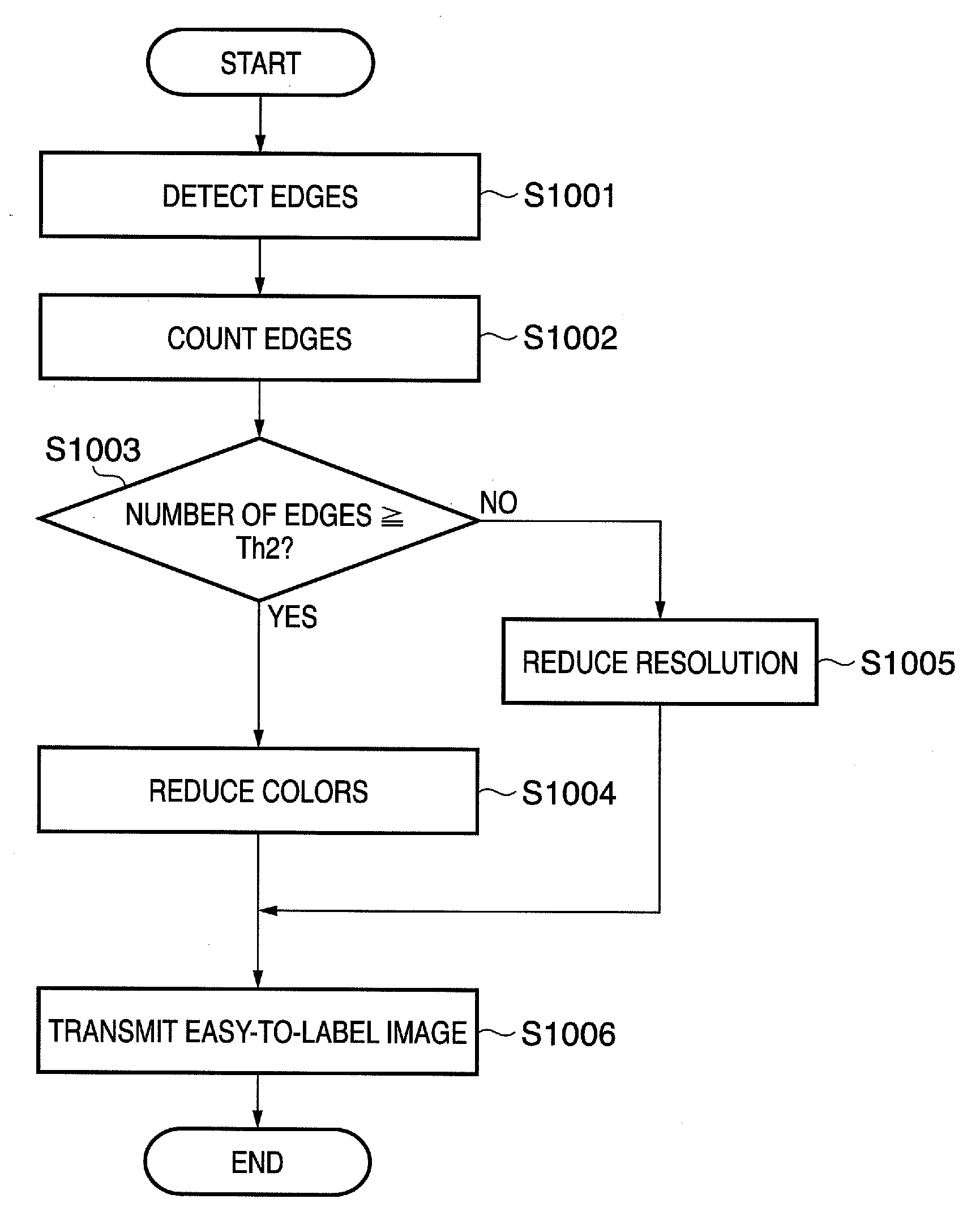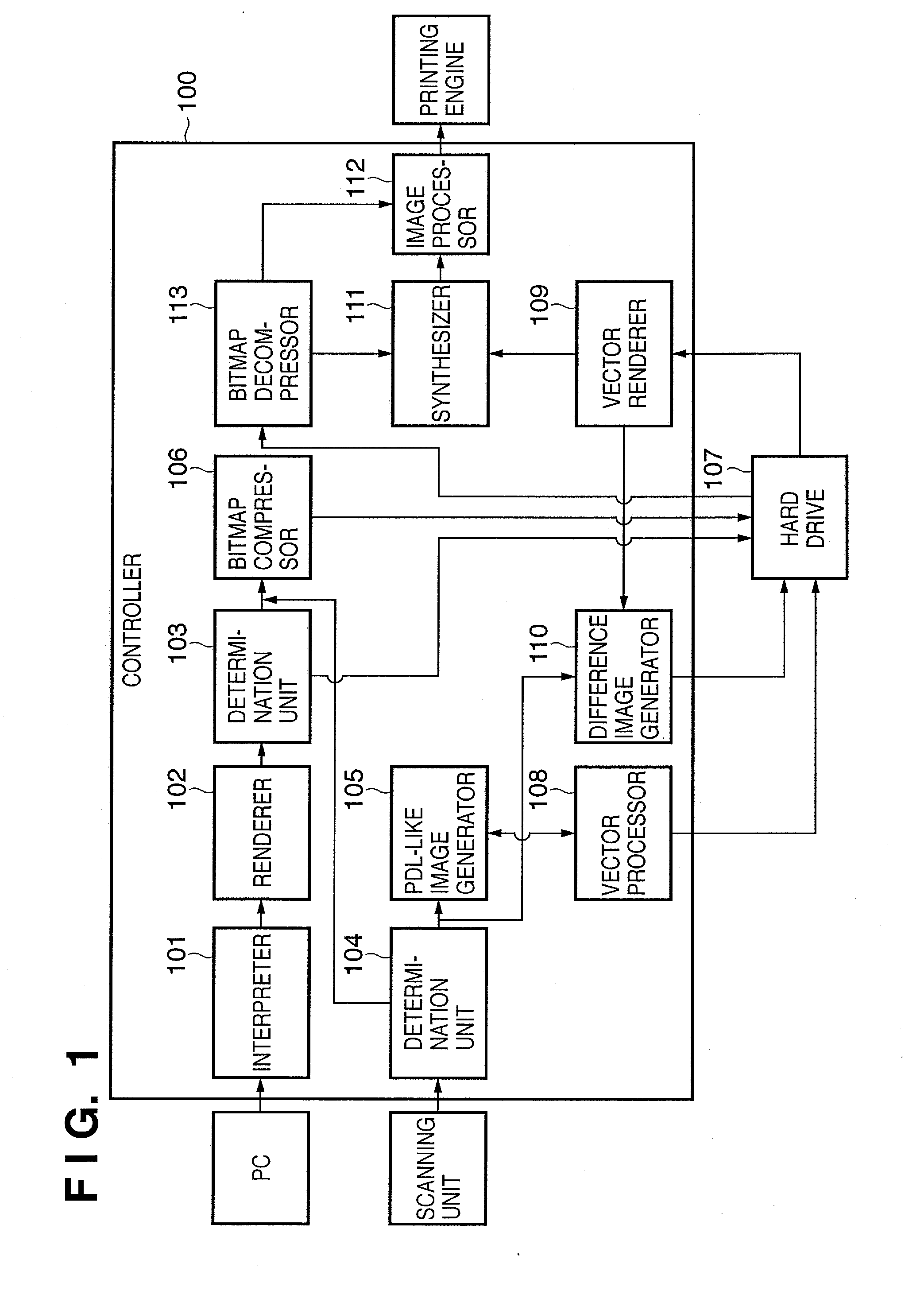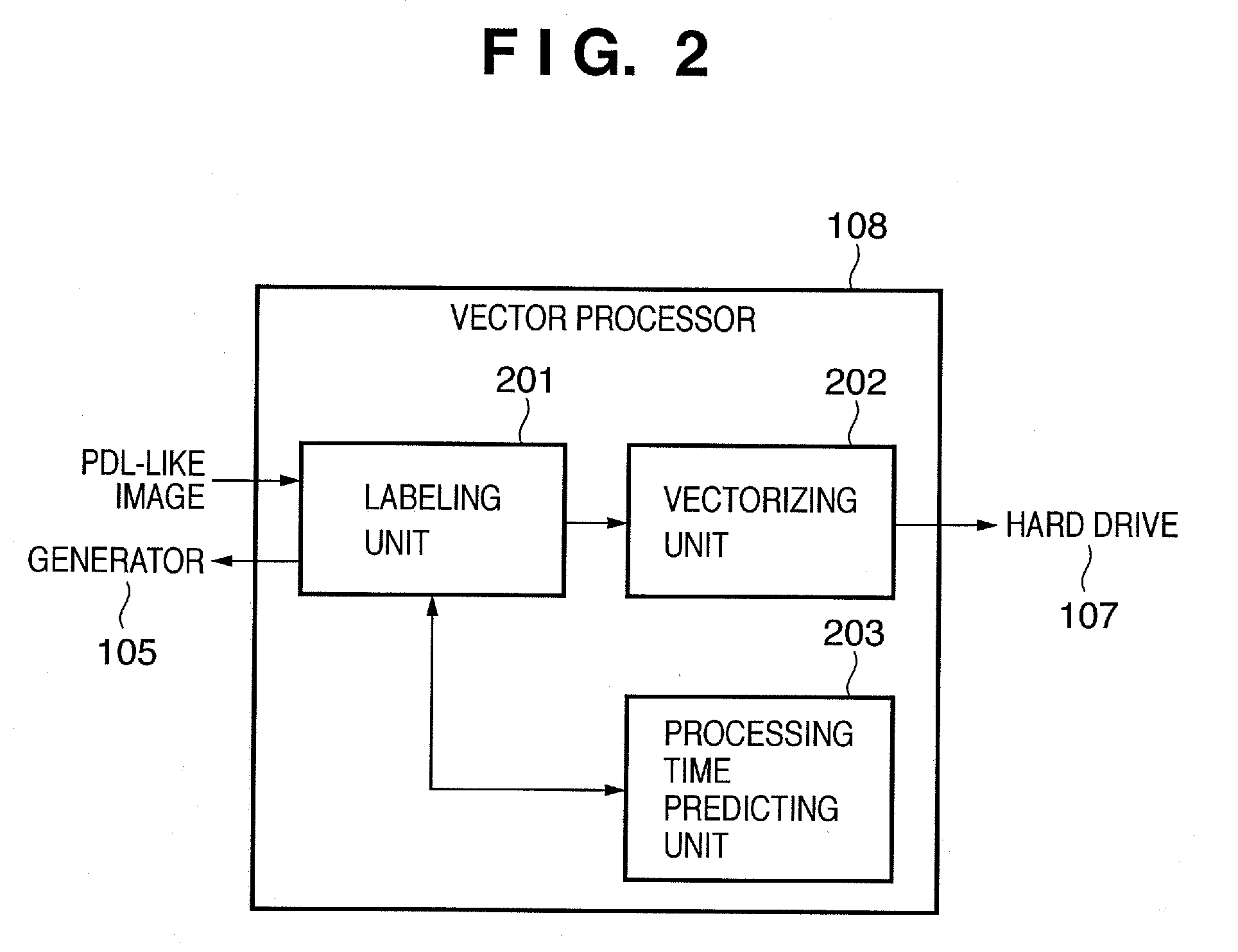Image processing apparatus and image processing method
a vector restoration and image processing technology, applied in the field of vector encoding technique, can solve the problems of increasing the encoding amount, insufficient vector restoration image as a printout image, scan noise in images received from scanners, etc., and achieve the effect of increasing the speed of the vectorization process
- Summary
- Abstract
- Description
- Claims
- Application Information
AI Technical Summary
Benefits of technology
Problems solved by technology
Method used
Image
Examples
first embodiment
[0071]As a method of reducing the processing load of the labeling process described above, a method of reducing the resolution of a rectangular image and a method (color reduction) of reducing the types of pixel values contained in a rectangular image as shown in FIG. 5 are possible. These two methods have their respective merits and demerits.
[0072]Color reduction readily accomplishes vectorization because a general shape of an original image can be relatively maintained, as shown in FIG. 6. However, if the number of colors originally contained in a rectangular image is small, even the color reducing process cannot largely reduce the number of colors. Consequently, the execution speed of the vectorization process cannot increase.
[0073]On the other hand, resolution reduction always increases the processing speed, unlike color reduction. As shown in FIG. 7, however, the edges are blurred, lowering the vectorization accuracy. Therefore, if color reduction and resolution reduction are s...
second embodiment
[0104]The first embodiment counts colors in an unprocessed region, and performs color reduction or resolution reduction on the unprocessed region in accordance with the count. The second embodiment adopts the following method as the method of counting colors. For example, when an image is a CG image as shown in FIG. 8, edges having sizes equal to or larger than a predetermined size are detected and counted, and the count is directly regarded as the number of colors. That is, the second embodiment performs determination on the basis of the number of edges instead of the number of colors.
[0105]FIG. 9 is a block diagram showing a functional configuration of a controller 900 of an image processing apparatus according to the embodiment. The controller 900 shown in FIG. 9 differs from the controller 100 shown in FIG. 1 in that a PDL-like image generator 901 replaces the PDL-like image generator 105. That is, the controller 900 performs the same processing according to the first embodiment...
third embodiment
[0112]Instead of measuring the elapsed time of the labeling process time to predict the end time of the whole labeling process, according to steps S302 and S303 of the first embodiment, it is also possible to predict the labeling process time from the characteristic, e.g., the number of edges of an image, and determine, on the basis of the predicted time, whether to use an easy-to-label image.
[0113]As described above, a variety of characteristics can be used as an index for determining whether to use an easy-to-label image, and an index for determining whether to perform a color reducing process or a resolution reducing process. It is also possible to use a variety of values as thresholds for use in the process.
[0114]Furthermore, to implement the processors configuring the controller shown in FIG. 1 or 9 by programs, a CPU and memory are installed in the controller, and programs for allowing a computer to function as the individual processors are stored in the memory. Note that the ...
PUM
 Login to View More
Login to View More Abstract
Description
Claims
Application Information
 Login to View More
Login to View More - R&D
- Intellectual Property
- Life Sciences
- Materials
- Tech Scout
- Unparalleled Data Quality
- Higher Quality Content
- 60% Fewer Hallucinations
Browse by: Latest US Patents, China's latest patents, Technical Efficacy Thesaurus, Application Domain, Technology Topic, Popular Technical Reports.
© 2025 PatSnap. All rights reserved.Legal|Privacy policy|Modern Slavery Act Transparency Statement|Sitemap|About US| Contact US: help@patsnap.com



